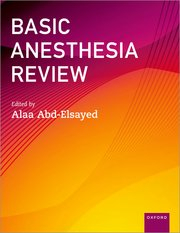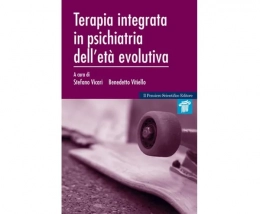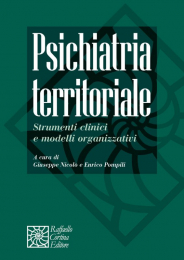Non ci sono recensioni
DA SCONTARE
Basic Anesthesia Review provides a comprehensive knowledge review for all second-year US Anesthesiology residents taking the American Board of Anesthesiology's (ABA) Basic Exam.
A companion to Advanced Anesthesia Review, this essential review features concise and readable chapters covering the relevant knowledge and concepts as determined by the ABA's curriculum. While multiple books are available for board review, very few have published since the ABA restructured board examinations. Basic Anesthesia Review is organized topically according to the most recently published ABA curriculum and highlights ABA key words along with bulleted key points to reinforce key concepts and facts.
BASIC SCIENCES
Anatomy
1. Topographical Anatomy as Landmarks
2. General radiographic anatomy
3. Neck anatomy
4. Chest
5. Back and Pelvis
6. Extremities
7. Dermatome anatomy
8. Brain and Skull
9. Spine anatomy
10. Abdominal Wall
11. Upper Extremity
12. Lower Extremity
Mechanics
13. Pressure Measurement of Gases, Liquids
14. Transducers, Regulators, Medical Gas Cylinders
15. Principles of Ultrasound
16. Flow Velocity
17. Flowmeters
18. Principles of Doppler Ultrasound
19. Properties of Liquids, Gases, and Vapors
20. Vapor Pressure and Calculation of Anesthetic Concentrations
21. Vaporizer Types and Safety Features
22. Uptake and Distribution of Inhalation Agents
23. Uptake and Elimination Curves
24. Concentration Effect
25. Second Gas Effect
26. Nitrous Oxide and Closed Spaces
27. Principles
28. Components
29. Circle Systems
30. Non-Circle Systems
31. Portable Ventilation Devices
32. Carbon Dioxide Absorption
33. Toxicity of Inhaled Anesthetics
34. Oxygen Supply Systems
35. Waste Gas Evacuation Systems
36. Safety Features (include disconnect monitors, line isolation monitors, and current leakage)
37. Monitoring Methods
38. Neuromuscular Function
39. Mechanism of Pulmonary Ventilation
40. Methods of Monitoring Oxygen
41. Blood Pressure Monitoring Methods
42. Heart Function: Heart tones, EKG, and Echo
43. Echocardiography
Instrumentation
44. Gas Concentrations
45. Pressure Transducers
46. Neurologic Function Monitors.
47. Fluid Warmers and Autotransfusion Devices
48. Body Warming Devices
49. Mechanical Ventilators
50. Defibrillators: Basic Physics and Anesthetic Implications
51. Electrical; Fire and Explosion Hazards; Basic Electronics
52. Intravascular Pumps
Mathematics
53. Statistics and Simple Math in Anesthesia Practice
Pharmacology
54. Pharmacokinetics and PHarmacodynamoics
55. Drug Absroption and Distribution
56. Pharmokinetics of Neuraxial Anesthesia
57. Tolerance and Tachyphylaxis
58. Termination of Action
59. Impact of Renal Disease
60. Impact of Hepatic Disease
61. Drug Internations
62. Hepatic Blood Flow
63. Drug-Drug Binding
64. Alternative and Herbal Medicines: Perioperative Implications
65. Drug Reactions
66. Anesthetics: Gases and Vapors
67. Minimum Alveolar Concentration (MAC)
68. Trace Concentrations, OR Pollution, Personnel Hazards
69. Comparative Pharmacodynamics of Inhaled Anesthetics
70. Intravenous Opioid Anesthetics
71. Substance Use Disorder
72. Epidural and Intrathecal Anesthesia
73.Barbiturates
74. Propofol
75. Etomidate
76. Benzodiazepines
77. Ketamine
78. Dexmedetomidine
79. Thiopental
80. Sodium Bicarbonate
81. Nitroglycerin and Sodium Nitroprusside
82. Nicardipine and Other Antihypertensive Medications
83. Calcium Channel Blockers
84. Monoamine Oxidase Inhibitors
85. Anticonvulsants
86. Local Anesthetics
87. Muscle Relaxants
88. Medication Assisted Opioid Withdrawal
89. Agents and Technqieus in Pediatric Anesthesiology
CLINICAL SCIENCES
Anesthesia Procedures, Methods, and Techniques
90. American Society of Anesthesiologists (ASA) Preoperative Testing Guidelines
91. American College of Cardiology/American Heart Association Guidelines for Perioperative Cardiovascular Evaluation
92. ASA Classification
93. Prepartion for Anesthesia/Premedication
94. Interaction with Chronic Drug Therapy
95. Adverse Reactions to Premedications
96. Drug Abuse
97. Intraocular Pressure
98. Uremia
99. Increased Cerebro Spinal Fluid Pressure
100. Chronic Steroid Ingestion
101. Obstructive Sleep Apnea
102. Depression
103. Chronic Obstructive Pulmonary Disease
104. Hypertension
105. Malignancy
106. Pediatric and Geriatric Doses, Routes of Administration
107. Anesthetic Management of Patients with Allergies
108. NPO and Full Stomach Status
109. Alteration of Gastric Fluid Volume and pH, Sphincter Tone
110. Continuation versus Discontinuation of Chronic Medications
111. Prophylactic Cardiac Risk Reduction
112. Prophylactic Antibiotics
113. COMA
114. Minimal Invasive Cardiac Surgery
115. Abdonimal Aortic Aneurysm
116, Anesthetic Choice in Reduced Renal Function
117. Fluid Replacement Strategies and Controversies
118. Problems of Termy and Delivery
119. Nonobstetric Surgery During Pregnancy
Regional Anesthesia
120. Spinal, Epidural, Caudal, Combined Spinal/Epidural
121. Intravenous Regional Anesthesia
122. Neuroaxial Anesthesia in Obstetrics
General Anesthesia
123. Stages and Signs of Anesthesia
124. Techniques of General Anesthesia
125. Assessment/Identification of Difficult Airway
126. Techniques for Managing Airway
127. Airway Devices
128. Surgical Airway
129. Endobronchial Intubation
130. Types of Endotracheal Tubes
131. Supraglottic Secretion Sunctioning and LASER Safety Protocols
132. Intravenous Fluid Therapy During Anesthesia
133. Colloids, Albumin, Hetastarch, and Pentastarch
134. Enhanced Recovery After Surgery Protocol for Fluid Therapy
135. Acute Postoperative and Posttraumatic Pain
136. Indications and Contraindications: Outpatient Pediatric Anesthesia in an Ambulatory Surgical Center
Common Complications
137. Trauma
138. Vascular Injuries
139. Neurological Complications
140. Bruns
141. Chronic Environmental Exposure
142. Hypothermia
143. Nonmalignant Hyperthermia
144. Acetylcholinesterase-inhibitor Toxicity
145. Bronchospasm
146. Latex Allergy
147. Laryngospasm
148. Postobstructive Pulmonary Edema
149. Aspiration of Gastric Contents
150. Malignant Hyperthermia
151. Pain Relief
152. Opiods
153. Agonist-Antogonists
154. Alpha-2 Agonists
155. NSAIDS
156. N-Methyl-D-Aspartate (NMDA) Receptor Antagonists
157. Tricyclic Antidepressants
158. Slective Serotonin Reuptake Inhibitor (SSRIs)
159. Other Modalities
160. Acupuncture and Hypnosis
161. Respiratory Consequences of General and Regiona Anesthesia
162. Cardiovascualr Consequences of General and Regional Anesthesia
163. Nausea and Vomiting
164. Neuromusclar Complications of Anesthesia
165. Neurologic Conseuqneces of Anesthesia
Central Nervous System
Physiology
166. Cerebral Cortex: Functional Organization
167, Subcortical Areas
168. Cerebral Blood Flow
169. Pathophysiology of Ischemia/Hypoxia: Global vs. Focal, Glucose Effects
170. Efffects of Brain Trauma or Tumors
171. Cerebrospinal Fluid
172. Blood-Brain Barrier
173. Relation to Blood Chemistry and Acid-Base Balance
174. Increased Intracranial Pressure
175. Genreal Organization
176. Spinal Cord Reflexes
177. Spinal Cord Tracts
178. Spinal Cord Morphology
179. Neuromuscular Transmission
180. Social, Vocational, and Psychological Influences on Pain Perception
181. Sex, Gender, and Age Differences in Pain and Pain Perception
Automatic Nervous System
182. The Sympathetic Nervous System
183. The Parasympathetic Nervous System
184. Termination of Action
185. Ganglionic Transmition
186. Autonomic Reflexes
187. Afferent and Efferent Limbs
Temperature Regulation
188. Temperature Sensing, Heat Production, and Conservation
189. Temperature Regulating Centers
190. Heat Loss Mechanisms
191. Body Temperature Measurement
192. Effect of Drugs/Anesthetic Technique on Temperature Regulation
Brain Anatomy
193. Cerebral Cortex
194. Cerebellum
195. Brain Stem: Anatomy and Critical Role in Nausea and Vomiting
196. Respiratory Cneters
197. Reticular Activating System
198. Cerebral Circulation; Circle of Willis, Venous Sinuses and Drainage
Spinal Cord and Spine
199. Variations in Vertebral Configuration
200. Spinal Nerves
201. Blood Supply
202. Sacral Nerves
203. Meninges
204. Cranial Nerves
205. Carotid and Aortic Bodies, Carotid Sinus
206. Ganglia, Rami Communicantes, Sympathetic Chain
207. Nociception
208. Periphera Nociceptors
209. Ascending Pathways and Descending inhibition
Respiratory System
Physiology
210. Lung Functions, Cellular Processes, and Surfactants
211. Lung Volumes and Capacities
212. Pulmonary Function Tests and Spirometry
213. Static, Dynamic Compliance and Airway Resistance
214. Pleural Pressure Gradient, Flow-Vlume Loops and Hysteresis, Surfactant, Laplace Law
215. Work of Breathing
216. Regulation of Airway Caliber
217. Ventilation: Perfusion
218. Distribution of Ventilation
219. Distribution of Perfusion
220. Alveolar Gas Equation
221. Diffusion and Pulmonary Diffusion Capacity
222. Apneic Oxygenation and Diffusion Hypoxia
223. Blood Gas
224. Oxygen Transport
225. Carbon Dioxide Transport
226. Systemic Effects of Hypercarbia and Hypocarbia
227. Systemic Effects of Hyperoxia and Hypoexemia
228. Basic Interpretation of Arterial Blood Gas and Temperature Correction
229. Repiratory Centers
230. Central and Peripheral Chemoreceptors
231. CO2 Response Curves
232. Non-Repiratory Functions of Lungs: Metabolic, Immune
233. Perioperative Smoking and Caffeine Use
234. Special Considerations in Pediatric Otolaryngology Surgery
235. Respiratory and Congenital Pediatric Airway Problems
Anatomy
236. Nasal Anatomy and Pathology
237. Pharynx
238. Larynx
239. Innervation
240. Vocal Cords
241. Differences Between Infant and Adult Airway
242. Structure and Relationships in Neck and Chest
243. Muscles of Respiration
Pharmacology
244. The Tracheobronchial Tree
245. Beta-Agonists
246. Anticholinergics
247. Steroids
248. Leukotriene Modifier Drugs
249. Mast Cell Stabilizers
250. Immunoglobulin E Blockers
251. Cocaine Pharmacology
Cardiovascular System
Physiology
252. Cardiac Cycle
253. Control of Heart Rate
254. Perioperative Use of Alcohol
255. Synchronicity of Pressure
256. Impulse Propagation
257. Normal ECG and Electrophysiology
258. Ventricular Function
259. The Frank-Starling Law
260. Force, Velocity, Length, Rate of Shortening
261. Myocardial Contractility
262. Myocardial Oxygen Utilization/Consumption
263. Systolic and Diastolic function
264. Cardiac Output: Fick Principle
265. Venous Return
266. Vessel Function
267. Blood Volume and Distribution
268. Blood Pressure
269. Systolic, Diastolic, Mean, and Perfusion Pressures
270. Intracardiac, Pulmonary and Venous Pressures
271. Baroreceptor Function
272. Systemic, Pulmonary Vascular Resistance and Viscosity
273. Capillary Diffusion, Osmotic Pressure, Starling's Law
274. Pre- and Post- Capillary Sphincter Control in Shock
275. Viscosity
276. Regional Blood Flow and Its Regulation
277. Regulation of Circulation and Blood Volume
278. Basics of Cardiopulmonary Resuscitation
Anatomy
279. Coronary Circulation
280. Cardiac Glycosides
281. Heart Conduction System
Pharmacology
282. Phosphodiesterase III Inhibitors (Inotropic Dilators)
283. Antiarrythmics
284. Vasopressors and Inotropes
285. Antianginal Drugs
286. Angiotensin Converting Enzyme Inhibitors and Angiotensin Receptor Blockers
287. Vasodilators
288. Electrolytes
289. Non-Adrenergic Vasoconstrictors
Gastrointestinal/Hepatic Systems
290. Hepatic Function and Metabolism
291. Enhanced Recovery After Colorectal Surgery
292. Anatomy of the Gastrointestinal and Hepatic System
Renal System
293. Renal and Urinary Systems/Electrolyte Balance
294. Renin-Angiotensin-Aldosterone System
295. Anatomy of the Kidney
296. Diuretics
297. Dopaminergic Drugs
Hematologic System
298. Alternatives to Blood Transfusion
299. Blood Transfusions
300. Immunosuppressive and Anti-Rejection Drugs
301. Transfusion Indications
302.Complications of Transfusions
303. Blood Preservation, Storage
304. Blood Filters and Pumps
305. Effects of Cooling and Heating
306. Preparation for Transfusion
307. Anesthetic Considerations for Reactions to Transfusions
308. Synthetic and Recombinant Hemoglobins
309. Massive Transfusion Protocol
310. Anticoagulants, Antithrombotics, and Anti-Platelet Drugs
Endocrine and Metabolic Systems
311. Hypothalamus
312. Pituatary Gland
313. Thyroid
314. Parathyroid Gland
315. Adrenal Gland and Pancreas
316. Adrenal Disease
317. Biochemistry of Normal Body Metabolism
318. Carbohydrates, Aerobic and Anaerobic Utilization, Chemical Processes and Enzymes
319. Relationship to Hormones
320. Glucagon and Caecholamines
321. Effects of Stress
322. Perioperative Management of Insulin
323. Protein Function as Immunoglobulins and Hormones
324. Protein Synthesis Structure, and Function
325. Cyclic Adenosine Monophosphate (CAMP), Cyclic Guanosine Monophosphate (CGMP)
326. Lipids: Triglycerides, Lipoproteins, Cholestorol
327. Specific Organ Metabolism
Neuromuscular Diseases and Disorders
328. Prejunctional Components and Events
329. Posjunctional Components and Events
330. Perijunctional Channels
Special Problems in Anesthesiology
331. Physician Impairment and Disability: Substance Abuse, Fatigue, Aging, Visual and Auditory Impairment, American Disabilities Act
332. Physician Wellness
333.Professionalism and Licensure
334. Ethics: Advance Directive, DNR/Suspend Orders, HIPAA
335. Informed Consent
336. Medical Errors
337. Shared Decision-Making
338. Disclosure of Errors to Patients
339. Core Competencies
340. Approach to Anesthesiology Exams: BASIC and ADVANCED




